Matador Network's Blog, page 774
September 30, 2020
Indigenous art in the US
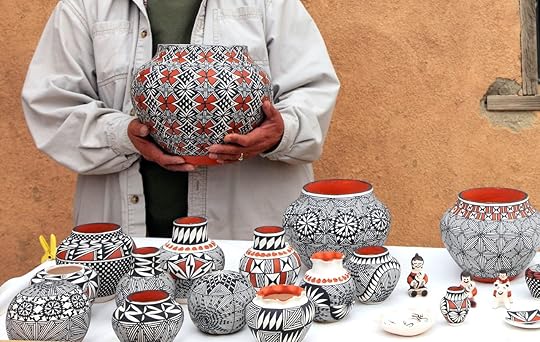
There are plenty of ways to learn about Indigenous culture in the United States. You can visit Native American heritage sites across the country for much-needed history lessons. You can check out museums and heritage centers or take part in events that focus on Native American culture. You can follow Indigenous photographers and travelers on Instagram. But one of the most beautiful and fulfilling approaches to gain insight into the many Tribal Nations in the US and support their people is to seek out, admire, and purchase their traditional art. Through ancestral techniques in carving, pottery, jewelry, and more, Native American artists keep their culture thriving. Here are six art forms practiced by Indigenous people in the US and where you can observe the process, buy the finished product, or maybe even try your hands at something meaningful and stunning.
1. Pipestone carving
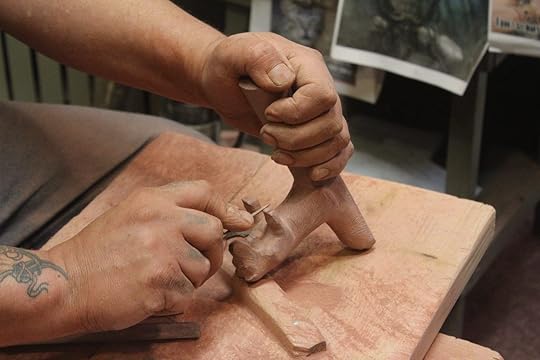
Photo: Pipestone National Monument/Facebook
Pipes have played a significant role in the lives of Native American people as smoking was seen as a spiritual practice — it is believed that the rising smoke from a pipe carries prayers to the Great Spirit. Examples of stone pipes dating from 2,000 years have been found in Ohio, and the tradition of pipe carving is still alive today in the Midwest. Starting in the 17th century, Native Americans started digging at Pipestone’s quarry (today Pipestone National Monument in Minnesota) to extract the pink-red soft stone and make stone pipes, some of which were extremely intricate. To this day, anyone with Native American ancestry can obtain a permit to quarry pipestone.
Pipestone National Monument has exhibits and demonstrations by pipestone carvers in its visitor center. The Keepers of the Sacred Tradition of Pipemakers, located in Pipestone, Minnesota, on the way to the national monument, offers pipe-making workshops and pipestone carving workshops. There is also a gift shop and a gallery on the premises where you can purchase pipes and other art pieces made by native Americans.
2. Walrus tusk carving and scrimshaw etching

Photo: Vladimir Melnik/Shutterstock
The long tusk of the walrus, a marine mammal found exclusively in the Arctic regions of the world, have been, and continue to be, a traditional medium for art by Native Americans throughout Alaska. While walrus are hunted primarily for their meat, the byproducts of the animal, especially their ivory tusks, are used in the making of art, most commonly scrimshaw etchings and carvings often depicting animals or traditional scenes. Though an almost-total ban on the commercial trade of African elephant ivory in the United States was imposed in 2016, it does not concern new marine mammal ivory, which may only be used by Alaska Natives and sold only once it’s been scrimshawed or carved.
The carvers of the small and remote village of Shishmaref on the Chukchi Sea in Alaska are the best-known carvers of marine animals in the state as about every resident is an artist. If you cannot make it to the island village of Shishmaref, you can support Alaska Native Artists in Anchorage by visiting the Alaska Native Heritage Center Gift Shop, the Anchorage Museum Store, and the Oomingmak Musk Ox Co-op. Marine mammal bones, baleens, fur, and skin are also used in the making of masks, decorative dolls, baskets, jewelry, and more.
3. Beadwork

Photo: Smithsonian’s National Museum of the American Indian/Facebook
The Native American art form most widespread throughout all Tribal Nations in the United States is probably beadwork. Used for jewelry, clothing, and decorative items, beadwork has evolved from using stones, shells, porcupine quills, sinew, and bones before the arrival of Europeans in North America to using glass beads and metal tools. There exist many beading styles throughout the nation, and those who are keen to see some of them should pay a visit to the National Museum of the American Indian in Washington, DC, and explore the immense collection that spans 12,000 years and includes historical examples of the art form as well as contemporary ones. The museum gift store sells examples of authentic beadwork, as well as other forms of Native American arts and crafts.
4. Acoma pottery
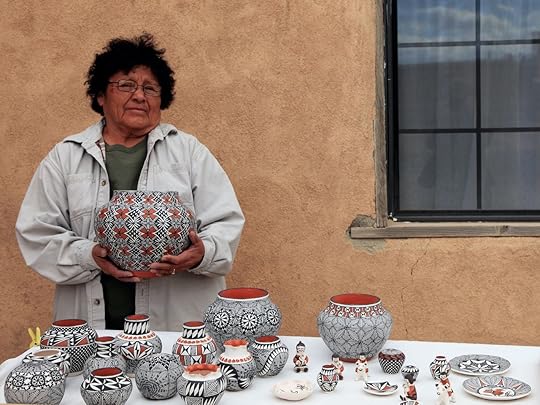
Photo: PM Simmons/Shutterstock
The pueblo of Acoma in New Mexico is the oldest continuously inhabited settlement in North America and is the place of origin of the famous Acoma pottery. Easily recognized by its thin walls, fine and intricate geometric patterns, and traditional black and orange colors, pieces of Acoma pottery were historically handmade with clay and fired at very hot temperatures. Today, the range of colors has expanded, and not all Acoma potters choose to construct their pieces by hand — some use molds and fire them in kilns — but the practice continues.
The patterns painted on Acoma pottery pieces are often geometrical, but it is also common to see depictions of deers, parrots, flora, and more. While nowadays Acoma pottery is an art to be admired, in the past they had practical uses as water jugs, cooking vessels, food storage containers, and even seed pots. The pueblo of Acoma has become an important tourist destination that can be toured. Visit the Sky City Cultural Center and Haak’u Museum where you can see examples of Acoma pottery and even purchase pieces made by local artisans. The cultural center has offered pottery classes in the past, so check out the calendar of upcoming events and activities. The gift store is also available online.
5. Star quilts

Photo: Smithsonian’s National Museum of the American Indian/Facebook
Before the hunting of buffalo to near-extinction by non-Native people in the late 19th century in an attempt to devastate the lives of Indigenous people who depended on the animals, plains nations used the hide of buffalos to create robes (among many other applications). Those robes were used in ceremonies and given as very precious gifts to convey love and respect and often featured a star pattern created in plant dyes.
When the buffalo herds almost disappeared, and the Native Americans were forced from their homes into reservations, missionaries taught Indigenous women how to sew, and from the techniques they learned, they created Morning Star quilts to replace the buffalo robes. This adaptation continues to this day, and colorful and complex Morning Star quilts are gifted to honor life events, such as births, weddings, and passings. The National Museum of the American Indian in Washington DC is home to a large collection of Native American quilts, including Eighty-eight quilts sewn by women from the Northern Plains tribes from the 1940s onwards that were acquired by the family of the collector Florence Pulford.
6. Turquoise jewelry
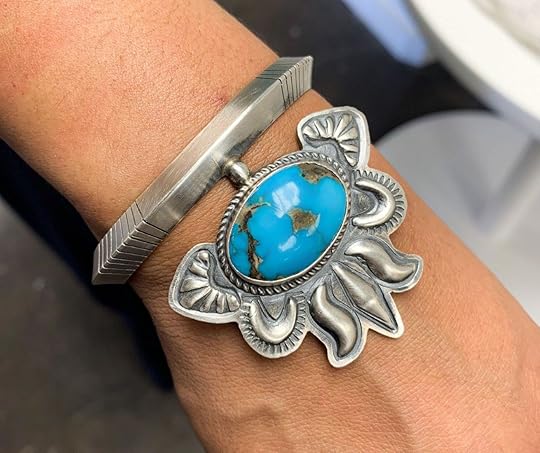
Photo: SWAIA – Santa Fe Indian Market/Facebook
Native Americans of the Southwest (mainly the Navajo, Hopi, and Zuni peoples), where turquoise was once abundant, have been using the semi-precious stone for beads and carvings for several centuries. Turquoise was then dubbed the “fallen sky stone” and believed to have life-giving powers. But it is not before the mid-1800s when Native Americans in the regions learned the art of silversmithing from the Spanish that the turquoise jewelry as we know it today came to be. In the early 20th century, Native Americans started selling their pieces to visitors to the area, and the popularity of the beautiful pieces took off, opening the door to shameless counterfeits. Even today, there are many illegal, fake turquoise jewelry pieces on the market, often priced much lower than the real deal and taking away valuable income from Native American artists.
If you want to purchase turquoise jewelry, note that it is quite expensive and that anything cheap that you encounter is likely fake. God places to purchase turquoise jewelry are the Santa Fe Indian Market and Taos Pueblo in New Mexico and the Cameron Trading Post in Arizona. 
More like thisCultureHow Native Arctic women are taking back the art of Inuit tattoos
The post 6 intricate and meaningful Indigenous art forms to admire up close in the US appeared first on Matador Network.

Singapore Airlines news

Airplanes aren’t exactly seeing the action they’re used to these days. Not to let a perfectly good aircraft go to waste, Singapore Airlines is opening a new restaurant on a A380 double-decker plane currently in disuse at Changi Airport. The restaurant is part of its “Discover Your Singapore Airlines” initiative, and will feel just like boarding a typical flight.
At Restaurant A380, guests will pass through airport security before boarding the plane via jet bridge. They will start the meal with a tour of the superjumbo, with access to areas that usually remain private. Menus will have options from each cabin class, including either international cuisine or a Singaporean Peranakan menu. Guests will be served by cabin crew and watch inflight entertainment while they eat.
The restaurant will only be open on October 24 and 25, and reservations becoming available on October 12.
In November, the airline will also be opening its training facilities to the public for exclusive behind-the-scenes tours.
SIA CEO Goh Choon Phong said, “With COVID-19 drastically reducing the number of flights operated by the SIA Group, we have created unique activities that would allow us to engage with our fans and customers during this time. These experiences offer something for everyone – from frequent flyers who miss our world-class in-cabin products and service, to couples and families who want an exclusive dining experience, and parents who are after an enjoyable activity-filled day with their children during the school holidays.”
Although having dinner in an airplane may not be as exciting as actually taking a flight, this initiative is a much better option to get travelers stuck at home excited about air travel than the incredibly planet damaging flights to nowhere that are all the rage these days. 
More like thisSustainabilityFlights to nowhere are growing, and they’re an insult to the planet
The post Singapore Airlines is turning an unused double-decker plane into a restaurant appeared first on Matador Network.

City Guesser website

Since we can’t travel as freely as we once could, we have to find more creative ways to satisfy or lust for exploration. Paul McBurney Jr., a teenage web developer, created the City Guesser website that drops users into a random location around the world and challenges them to guess where they are. Users watch video walking footage of the city they’re in to make their guess, utilizing the site’s footage of over 635 cities around the world.
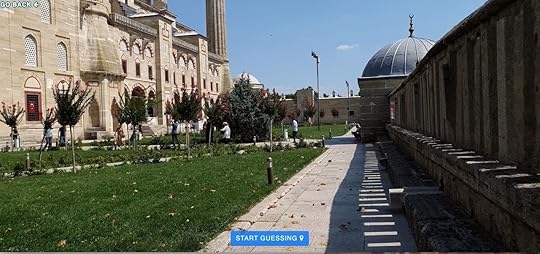
Photo: City Guesser
According to MacBurney, “As the quarantine in the United States continued to worsen, I wanted to create something where people could travel the world, but be challenged at the same time. City Guesser is the perfect solution to that wish.”
The website allows you to narrow your destinations by country, currently including the US, Canada, Russia, England, France, Japan, Brazil, India, Australia, Argentina, Asia, and Europe. Or the truly expert guessers can simply choose to be dropped anywhere in the world.
When you’re ready to make your guess, you just click on the “start guessing” button, and you can place a pin wherever you want on the map. Then, the site tells you how accurate your guess was. Be warned, though, it’ll give you an itch to travel that might be more pesky than exciting right now. 
More like thisBudget Travel5 popular European cities where your dollar will go the furthest
The post The City Guesser website puts your traveler’s knowledge to the test appeared first on Matador Network.

Panama is reopening to US tourists

Panama is reopening its borders to international visitors this fall, with new protocols in place designed to keep both visitors and residents safe.
Starting October 12, the country will reopen to international tourists from all countries, including the US, as long as they present the negative result of a COVID-19 PCR or antigen test taken no more than 48 hours before arrival. If it was taken more than 48 hours prior to arrival, the visitor will be required to take a rapid test at the airport at their own expense — approximately $30. Passengers will also be expected to complete an electronic affidavit before checking into their flight, agreeing to comply with all sanitary control measures.
Ivan Eskildsen, Panama’s Minister of Tourism, said, “After closing our borders to travelers in late March, we are excited to safely welcome visitors back to Panama. The new health and safety protocols reflect our continuous hard work and dedication in protecting both Panamanians and our visitors, and through our efforts, have earned the World Travel & Tourism Council (WTTC) Safe Travels stamp of approval. Our beautiful country, rich in nature, biodiversity and cultural heritage is once again ready to be discovered.”
Masks will be required at the airport, as well as in all public places within the country, and incoming passengers should expect additional measures like temperature screenings to be in place. If you’re found to have COVID-19 symptoms, or your rapid test is positive, you must quarantine for seven days — at no cost to you — in a hotel for seven days before taking another test.
Panama received a World Travel & Tourism Council Safe Travels stamp of approval for its new COVID-19 protocols, which may reassure some prospective travelers. 
More like thisSolo TravelHow a bar crawl in Panama changed how I travel forever
The post Panama is reopening to international tourism on October 12 appeared first on Matador Network.

CDC cruising ban overruled
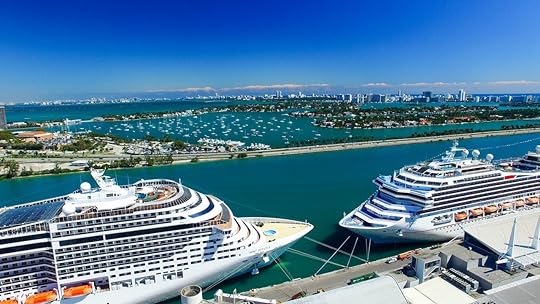
Yesterday, Robert Redfield, the director of the Center for Disease Control and Prevention, met with the Trump administration’s coronavirus task force, including Vice President Mike Pence, at the White House to discuss the future of the cruise industry. According to Axios, Pence blocked the CDC from extending the cruise ban that has been in effect since March until February 2021, though he agreed to allow an extension until October 31.
Public health officials have complained that the overruling is another example of politically motivated decision-making, since the industry is a huge part of Florida’s economy — a key battleground state. While it may give Florida an economic boost, the resumption of cruising could lead to serious outbreaks, as seen when the pandemic began earlier this year.
Instead of Redfield’s recommendation, the no-sail order has been extended to October 31. The Trump administration hopes that the cruise industry will be able to come up with a plan by then to ensure cruising can take place in a safe and responsible manner. On Friday, representatives from the cruise industry will meet with Trump administration officials to discuss potential paths forward, including the ultimate length of the ban. 
More like thisCruisesWhy I plan to keep cruising as soon as we get the all-clear
The post Overruled by White House, CDC extends cruise ban until October 31 only appeared first on Matador Network.

What is Fat Bear Week

While Americans prepare to cast their votes in the presidential election, people are also casting votes for a similarly contentious contest. It’s Fat Bear Week in Katmai National Park & Preserve, Alaska, the week when the fattest bear in Brook River is celebrated for packing on the most pounds before the winter hibernation and receives the recognition and praise it deserves.
For the seventh year in a row, Katmai National Park & Preserve is launching its tribute to chunky, healthy bears with this weeklong celebration. The competition itself is organized in a bracket system, where bears commonly spotted on the park’s Bear Cam face off for votes.

Photo: NPS
In the single-elimination tournament, your vote decides who will take home the coveted title of 2020’s Fattest Bear. Voting begins September 30, and matchups will be online for voting from 12:00 PM to 10:00 PM ET. Just go to the official contest website to vote daily.

Photo: Katmai National Park & Preserve/Facebook
It remains to be seen whether previous champions Holly and Otis will be able to reclaim their titles, especially with so many hefty challengers waiting in the wings. Today, you get to choose if brown bear 151 or 856 is the roundest. 
More like thisWildlifeThe 7 best places to see a polar bear in the wild
The post Fat Bear Week is back, and voting starts today appeared first on Matador Network.

Why you should visit Loire Valley
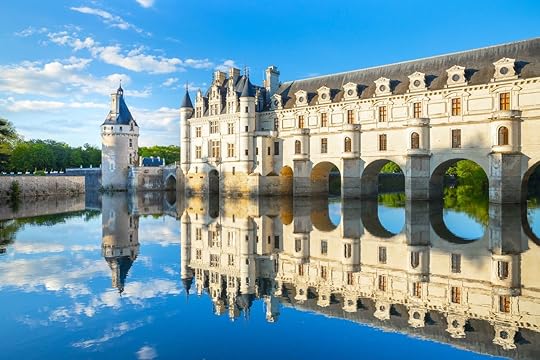
The Loire Valley is the epitome of romantic France. It is a region most famous for its opulent French royal châteaux, its rich diet of Renaissance art, photogenic cities with manicured gardens, bucolic natural landscapes, and exceptional food and wine.
The area once known as the Valley of Kings was favored by French monarchs and the noble families who sought to remain close to them. The sheer number of castles and country houses that are somewhat crammed into the valley — albeit beautifully so — is astounding. The region is so full of elegant architecture and regal history that it can feel a tad overwhelming, and, now that it is no longer a playground for the few, you’ll find you won’t be alone on the well-trodden Trail des Châteaux, or Trail of Castles. That said, you don’t have to wander too far to find enchanting hamlets, serene woodlands, and hidden waterways that have inspired some of the world’s greatest poets and artists.
For wine lovers, the Loire may not challenge Burgundy or Bordeaux, but for those who live and work there, wine is a way of life — both for business and pleasure. Here you’ll find a food and wine scene of quality and sophistication in both their traditional French cookery and a more modern use of local produce. The cities here match the elegance of Paris but lack the crowds and expense. Each has its own character offering a wealth of impressive architecture, well-tended parks and gardens, world-class museums, and irresistible restaurants.
Beyond the mentioned attributes of the valley, it is the Loire River itself that quite simply, brings life to this part of France. A constant pleasure, the river’s energy seems to change daily but the seasons invite the most dramatic transformation. From golden poplars lining the river banks in autumn to the fresh scent of wisteria and rose in spring, there is never a bad time to visit the waterway; you’ll just have a different experience.
If you’ve ever pondered if leaving Paris and visiting Loire Valley is worth it, it certainly is. Here are a few more reasons why.
How to get to The Loire Valley from Paris

Photo: irakite/Shutterstock
If you are not driving, the more efficient and fast way to reach the region from Paris is via the high-speed train, the TGV. The journey time is as little as 57 minutes to the city of Tours. All routes leave Paris Montparnasse. The train itself is of a very high standard; the only downside is that you’ll hardly have time to crack the spine of your châteaux guide book or enjoy a glass of Chinon as you watch the French countryside zoom past. On arrival, train travel around the region is also very good, but it might be worth looking into renting a car or bike, which you can do at most main stations. The TGV ticket and hiring of local transportation can be built into a package.
The region is home to some of the finest cities in France
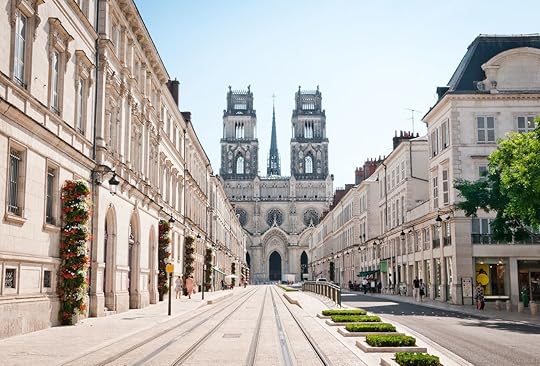
Photo: Alexander Demyanenko/Shutterstock
The Loire River is the main character in the history of the development of modern towns and cities and of the country of France itself. It stretches 627 miles and is the longest river in the nation. Fueling farmland and pastures and transporting not only crucial trade but also people and ideas, its role in history is integral to the development of urban dwellings.
If you are looking for a quieter alternative to Paris the cities of Tours and Orléans offer similar attributes as the capital but have a little more charm.
Tours
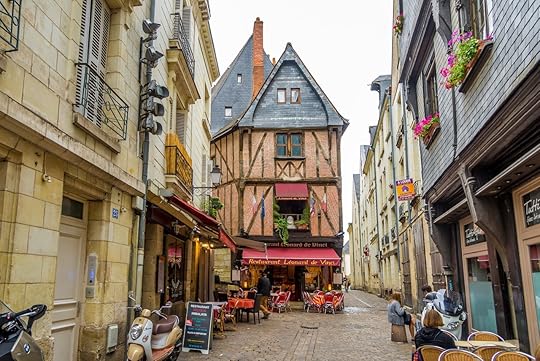
Photo: milosk50/Shutterstock
Home to French novelist and playwright, Honoré de Balzac, Tours was developed from a Roman town and a medieval religious center linked to the life work of Saint Martin. Surrounding Saint-Gatien Cathedral the medieval streets retain original buildings with gothic accents such as gargoyles, and the blend of classic French Renaissance architecture against the bold half-timbered facades of the medieval sector makes for a fascinating walking tour.
Tours is indeed a city to discover on foot and if you are interested in history, art, and architecture you are in for a real treat. Some of the highlights include the Saint-Gatien Cathedral, a masterpiece of French Gothic architecture; the neighboring Musée des Beaux-Arts, Hôtel Goüin, one of the finest Renaissance buildings in the city; and the restored Place Plumereau square, a perfect spot to relax and sample some of the best regional produce from one of its many restaurants.
Orléans
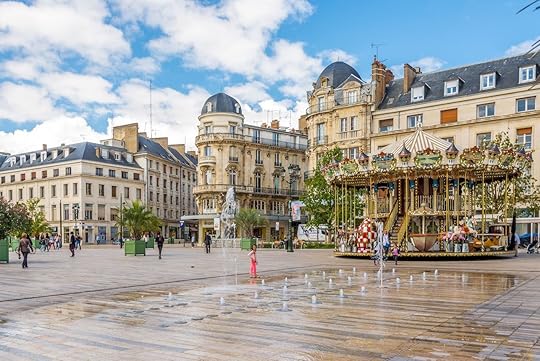
Photo: milosk50/Shutterstock
The city of Orléans is where you need to come to eat, drink, and enjoy live music. The quality of dining establishments here is hardly surprising considering the city draws locally from the vast amount of market gardens and sources meat, poultry, and cheese from the nearby farming region of Beauce. Some of the higher quality restaurants such as La Parenthèse, La Dariole, and L’Hibiscus offer Michelin distinction menus, but what makes Orléans a particularly special city to eat are the small restaurants and cafes in hidden courtyards or those with a terrace overlooking The Loire — of which there are plenty.
Orléans is an energetic city that begs to be enjoyed from first thing in the morning right through to late at night. The city’s planning is harmonious with the river and its elegant architecture is as stunning in the afternoon sunshine as it is dramatically floodlit at night. In the evening the historic Rue de Bourgogne is the perfect place to have a drink and listen to live music. The streets are lively and it’s welcoming to all, including families.
Some of the grandest châteaux are here
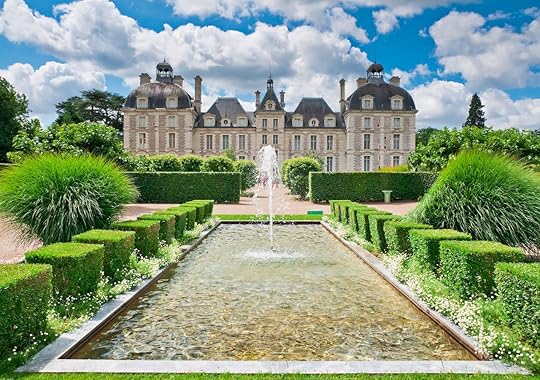
Photo: Alexander Demyanenko/Shutterstock
The castles and country houses of the Loire are reason alone to visit the region. Even if history and art don’t normally excite, this was once the epicenter of the Renaissance in France and some of the buildings and the stories behind the opulence and occupants will not disappoint. As noted, though, the quantity of noble manors you could visit can feel overwhelming. Although you may want to tick off every château on the route, we recommend choosing a select few, going early in the morning to avoid crowds, and spreading out the visits throughout your stay in the region.
Amboise
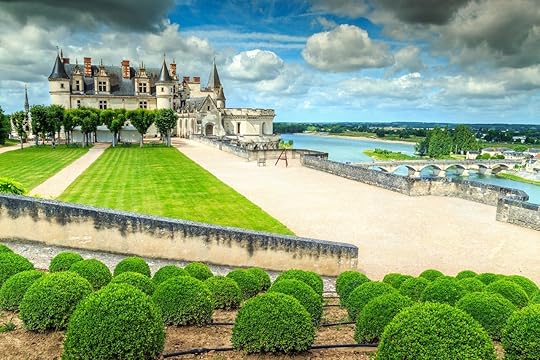
Photo: /Shutterstock
Considered the most royal of the chateaux of the Loire, Château d’Amboise was once home to five kings, and it is whispered Julius Caesar spent a winter in its quarters. This was also where Leonardo da Vinci was laid to rest. Da Vinci spent many years in Amboise as an honored guest of the King of France and resided in the charming manor house in Amboise called Clos Lucé.
You can explore both the châteaux and Clos Lucé in one visit as they are but a short five minute walk away from each other. The châteaux of Amboise towers over the village and looks out of the Loire, offering spectacular views of the region. The interior has been restored in places, but the furnishings are authentically and wonderfully French. Down the hill, Clos Lucé has on display models of Da Vinci’s canon, car and helicopter, and many sketches and drawings that are a unique collection in his final residence. The gardens of the manor are quite fantastic too and it’s worth planning a visit around lunchtime, as its restaurant, L’Auberge du Prieuré, offers a menu from the Renaissance period and prepares all food with traditional methods of the time.
Villandry
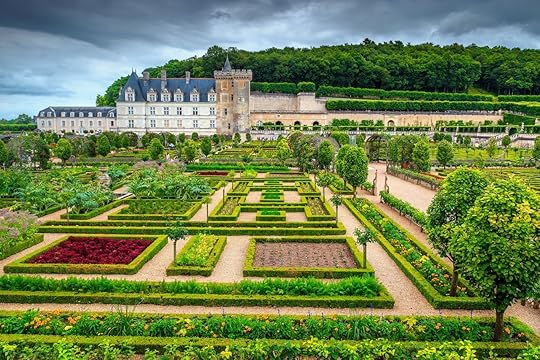
Photo: Gaspar Janos/Shutterstock
Villandry is a treasure in an already spectacular valley. One of the last great châteaux to be built in the Loire Valley during the Renaissance, it is a perfect example of 16th-century architecture. The building is bordered on three sides by a moat, which creates a dramatic impression on the visitor. The luxe interior and its scattered family heirlooms are worth viewing, but it is the gardens that people really come to see.
Inspired by the influence of the Italian Renaissance, Villandry’s geometrically styled grounds are arranged into three terraces. The top level has a huge pound from which the fountains and the moat draw their water. The second tier is an ornamental flower garden and the lower is home to the spectacular vegetable gardens. The château owner, Dr. Joseph Carvallo, still lives there today with his family and enjoys picking vegetables and herbs from the gardens for their family kitchen. The gardens are so incrementally detailed and so delightful that you could easily spend a long afternoon exploring the grounds.
The Loire is also known as The Garden of France
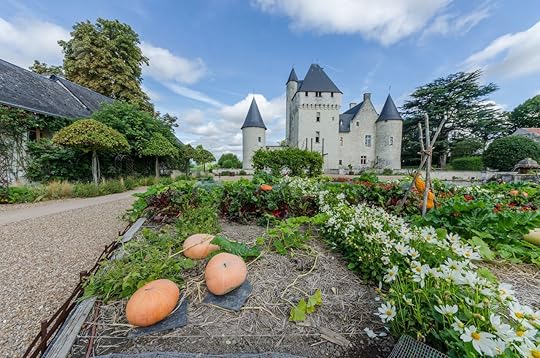
Photo: Evgeny Shmulev/Shutterstock
Along the Loire, you are never more than a stone’s throw from nature — even in the cities. It’s known as the Garden of France for very good reason. The long tradition of curating gardens, both for pleasure and for consumption, started during the Renaissance. Today the region still produces some of the country’s finest fruits and vegetables and has some of its loveliest green spaces.
While the gardens of Villandry may be the most perfect all-in-one stop to visually appreciate the level of landscaping and work that goes into French formal gardens, there are others worth visiting — and each has its own distinct character.
A little over six miles from Chinon and Richelieu, the château gardens of Le Rivau are home to over 450 different varietals of rose. Similar to Villandry, it has a notable kitchen garden and a maze. Just as grand are the wooded 55-hectare gardens of Château de la Bourdaisière, located between Tours and Amboise. Its tomato conservatory is home to over 700 varieties and an afternoon could easily be lost in its ancient orchard. The groundskeepers have also arranged the garden of dahlias — of which there are over 400 varieties — by color.
These quintessential examples of some of the world’s most manicured and well-planned gardens can be busy during the summer, so a quieter option such as the cultivated gardens of Saint-Cosme Priory, located only two miles from Tours, is an ideal place for a quiet afternoon stroll, offering peace and sanctuary beside the buildings of the old monastery.
Within the cities and towns, there are many planned gardens and green spaces to enjoy, too. The botanic gardens of Orléans are particularly special, but the region is also an excellent place to rent a bike and enjoy the natural beauty of the landscape along the banks of the river. Cycling is a perfect way to hop between towns and vineyards — either on a planned route, of which there are many, or just for a casual ride in the countryside. 
More like thisFood + DrinkFind the French wine tasting of your dreams in the Loire Valley
The post France’s Loire Valley overflows with elegant castles and flawless gardens appeared first on Matador Network.

Orionid meteor shower soon
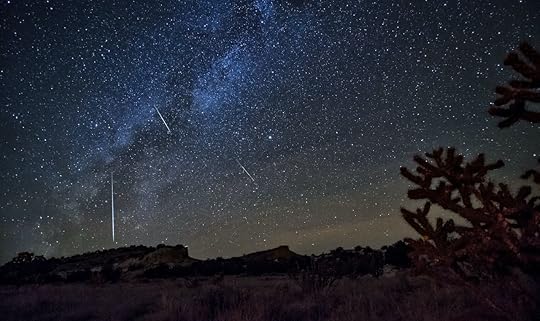
There’s more to look forward to in October than just Halloween. That’s especially true this year, when Halloween celebrations might be a bit underwhelming. The Orionid meteor shower lights up the sky every October, with around 15 shooting stars streaking through the night each hour at its peak — although up to 70 per hour have been recorded during the shower’s strongest years.
The Orionid stars are extremely fast, moving at a speed of 41 miles per second, and leave behind a trail that stays in the sky for up to a minute. The shower is set to occur between October 2 and November 7, and will peak on October 21-22. After midnight on October 21 is your best chance to see the cosmic material from Halley’s Comet, though the nights before and after should also be great stargazing times.
To view the shower, get as far away from light pollution as possible, and go out 20 minutes early to give your eyes time to adjust to the darkness. Then, look up at the Betelgeuse star in the Orion constellation. The shower will be brightest between midnight and dawn — particularly just before dawn. 
More like thisAstronomy12 stargazing events you don’t want to miss in 2020
The post The Orionid meteor shower will light up the October sky appeared first on Matador Network.

September 29, 2020
When can US citizens visit Europe?
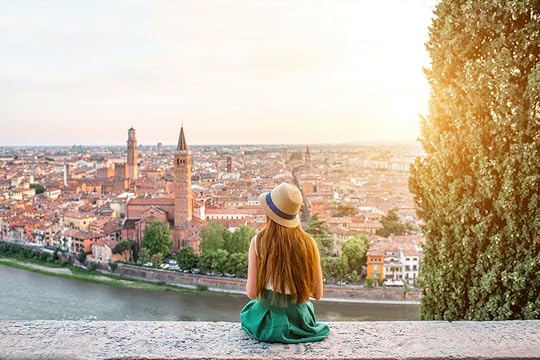
The number one question on everyone’s lips right now is “when will this pandemic be over?” The number two question (probably) is “when can we travel to Europe again?” On March 17 the EU passed a travel ban prohibiting international visitors from entering Europe for 30 days. Since then, the ban has been renewed every month, plunging travelers to a nightmarish Groundhog Day-esque reality that keeps us wondering when we’ll be able to freely explore our world again. Not much has changed for us since March. In June the EU released a list of countries that would be permitted to enter its borders, based on their success containing COVID-19. No surprise, the US wasn’t on it.
Flights are running on limited schedules between the US and Europe, but that doesn’t guarantee you can actually get in. EU countries are allowing entry to those with EU passports, and some countries are allowing essential workers and students. That said, unless you possess dual citizenship and have an EU passport, chances are you’re on the “no” list.
Technically each member state of the EU is free to do as it pleases. Pretty much every country, however, has decided to stick to the collective agreement and not open any borders unless it’s part of a coordinated effort to do so. That doesn’t mean there aren’t some slight deviations, which may prove intriguing to travelers.
Croatia is one of the only countries in the EU allowing US tourists to visit. All you have to do is present evidence of a negative COVID-19 PCR test, with a result no more than 48 hours old. Without a test you’ll have to quarantine for 14 days at your own expense, or for one week if you take a test within seven days of entering the country. Before arriving you’ll also have to fill out an online travel form with a confirmed hotel or accommodation booking.
US travelers are also able to visit the UK but must quarantine for 14 days upon arrival. The UK released a list of countries and territories exempt from quarantine, but of course, the US isn’t on it. Upon arrival you’ll have to provide UK border control with your contact details, including phone number and address in the UK where you’ll be self-isolating. Failure to quarantine may result in a fine of up to $1,270. Similarly, US citizens are allowed to travel to Ireland but must self-isolate for 14 days.
Back in June, Portugal got many travelers’ hopes up when it announced it would open, quarantine-free, to international travelers. However, when the EU announced the extension of its border closures in July, Portugal followed suit. Portugal has vowed to open to Portuguese-speaking countries and those with large Portuguese communities — including the United States — as long as reciprocity is granted for Portuguese citizens. The US’ travel ban currently remains in place for EU citizens, but if that should end, Americans would presumably be able to travel to Portugal.
The Mediterranean island of Malta also recently opened to US travelers, as did Turkey, which lifted its COVID restrictions entirely back in June. Serbia is another country welcoming international travelers, including US citizens, with no testing or quarantine restrictions.
European travel rules and restrictions are changing daily. The best way to stay abreast of the evolving situation is to check each country’s embassy website for updates. But if you were dreaming back in spring of your eventual fall getaway, unfortunately, you’re going to have to wait a little longer.
We probably wouldn’t get too psyched about a European ski vacation in winter either. 
More like thisTravelThe days of US passport dominance may be over
The post When will Americans be allowed to return to Europe? appeared first on Matador Network.

Glass Fire damage in Napa Valley

Napa Valley’s Château Boswell Winery made headlines yesterday as one of several landmark properties that have been destroyed or damaged by the wildfires tearing through Northern California’s wine country. At least 113 structures have been razed by the Glass Incident fire, which comprises the Glass, Shady, and Boysen Fires. Late last night, California Governor Gavin Newsom declared a state of emergency in Napa and Sonoma Counties after the blaze tripled in size, extending the order to Shasta County due to the Zogg fire burning farther north.
The #GlassFire has consumed the Chateau Boswell Winery and other structures along Silverado Trail in St Helena . The fire is currently zero percent contained. #RedFlagWarning pic.twitter.com/FRiGaCrMMR
— Justin Sullivan (@sullyfoto) September 28, 2020
An institution on the Silverado Trail, the famed wine route connecting the cities of Napa and Calistoga, Château Boswell was among the first boutique wineries in Napa Valley. On Sunday, the privately owned family winery, which celebrated its 40th anniversary in St. Helena last year, was reduced to rubble along with its prized wine collection dating to 1979. “We are simply heartbroken,” owner Susan Boswell told the San Francisco Chronicle via email.
Château Boswell has not been the only newsworthy loss in St. Helena. The Black Rock Inn, a boutique bed and breakfast on the Silverado Trail, burned late on Sunday. The renowned Meadowood Napa Valley resort also sustained serious damage, including the loss of the famed Restaurant at Meadowood, which earned its third Michelin star in 2011.
Structure burning at Meadowood Napa Valley. Firefighters on scene protecting other structures. #glassfire @EastBayTimes @OakTribNews @mercnews pic.twitter.com/5l4tlZJeRK
— Tyska (@Tyska) September 29, 2020
Executive Chef Chris Kostow took to Instagram yesterday to lament the loss, writing, “We are all torn apart … for now, I want to thank all of the TRAMily that have ever graced this magical space — and all of the guests over the years who have enjoyed the efforts of these multitudes.”
Meadowood’s director of culture and communications, Brett Anderson, also commented Monday. “We don’t know the extent of the damage,” he told Wine Spectator, “but we have the photos of the fire posted by first responders on social media and are heartbroken.” He later stated, “We’re going to reopen and we believe that the Napa Valley as it has in the past will experience a renaissance after this.”
According to Wine Spectator, Tuck Beckstoffer Winery also lost everything but its winery while Hourglass Winery in Calistoga lost its “Blueline vineyard adjacent to Calistoga Ranch.”
Calistoga ranch is gone. This is 48 hours apart. Absolutely heartbreaking. #glassfire #calistogaranch pic.twitter.com/ngsOwSMWdR
— Diede van Lamoen (@dvlamoen) September 28, 2020
Calistoga Ranch reported ruin of its own. Like Meadowood, the luxury Auberge Resort has been one of the most talked-about and sought-after accommodations in Napa Valley since it opened in 2004. “At this time, we know the resort has been extensively damaged by the fire,” spokesperson Jessica Rothschild told SFGATE.
Fewer than three miles away on the Silverado Trail, the Fairwinds Estate Winery fell victim to the same flames. Per an update posted to the winery’s website, “Most of the Fairwinds Winery and its Tasting Room have been seriously damaged by the recent Napa Valley fires. We hope to get creative and find ways to show you our wines in some other way on the property soon. We are pleased to report that our people are safe. Our hearts go out to friends and neighbors, many of whom have lost their homes and all their belongings.”
A winery employee trains water on flames burning at Castello di Amorosa, a major tourist destination between Calistoga and St. Helena. The building is behind the main castle. #GlassFire#NapaValley#wine pic.twitter.com/2vFzQsiDr6
— Derek Moore (@deadlinederek) September 28, 2020
Other iconic properties in Calistoga are reporting partial damage. The 120-year-old barn at Tofanelli Vineyards has burned, endangering the site’s nearly 100-year-old vines. Castello di Amorosa, an attraction on Highway 128 owing to its grand medieval-style Tuscan manor, saw its farmhouse destroyed. Photographs and videos posted to Twitter show the winery’s employees attempting to put out the flames themselves. Though the “lab is gone, offices are gone, [and] the wine was destroyed,” according to owner Dario Sattui, the “castle” itself is still standing.
As of Monday evening, the entire city of Calistoga has been ordered to evacuate.
At the time of writing, the Glass Incident wildfire has burned 36,236 acres and is zero percent contained, according to Cal Fire. This leaves several other Napa Valley estates in jeopardy, among them the Reverie, Davis Estates, Ledson, Schramsberg, and Viader wineries.
It's hard to get updates on the vineyard. It looks like we are in the thick of it. The fire has reached our neighbors down the mountain below us like Viader (see photo). We thank you all for your thoughts and prayers. #glassfire #howellmountain #napavalley #calfire pic.twitter.com/EZ0N9djzNp
— Howell Mt. Vineyards (@HowellMountainV) September 28, 2020
While firefighters have been monitoring Viader Vineyards on Howell Mountain, the nearby Burgess Cellars was not so lucky. The CEO of Heitz Cellar, which recently purchased the almost 50-year-old family-run Deer Park vineyard, said in a statement, “We look forward to rebuilding, but right now we are focused on the safety of our employees as well as our fellow Napa wineries and community at large during this unpredictable time.”
Thanks to the heroic efforts of fire crews last night, Duckhorn Vineyards is standing tall, and our staff (including our beloved winery cat Kitter) is out of harm’s way. Our hearts go out to our neighbors during this difficult time. The winery will remain closed today. #glassfire pic.twitter.com/uSr299OlgB
— Duckhorn Vineyards (@duckhornwine) September 28, 2020
As reports of more damage and destruction flood in, at least two wineries have taken to social media to announce that they have been spared from the flames. Failla Wine Company owner Ehren Jordan posted on Instagram that the winery has “survived to harvest another day” while Duckhorn Vineyards posted on social media yesterday morning that it’s “standing tall” and its staff is “out of harm’s way” thanks to the “heroic efforts of fire crew last night.”
A lot of ash, some of it scary large, is falling on my sister’s street in #SantaRosa because of the #GlassIncident #GlassFire #SonomaCounty pic.twitter.com/8ZTLiirf44
— Erin Ailworth (@ailworth) September 28, 2020
This is not the first wildfire season that has ravaged Northern California’s wine country. The recent inferno is reminiscent of the Tubbs and Nuns Fires that tore through Napa, Sonoma, and Lake Counties in 2017. At the time, the Tubbs Fire was classed as the worst wildfire in the state’s history, with much of the devastation centering on Santa Rosa. The current Glass Incident has also destroyed a number of homes in Santa Rosa’s Skyhawk neighborhood.
Though the safety of the Napa Valley residents affected by the current blazes is of the highest importance, that the Glass Incident has claimed or damaged at least a dozen notable wineries and accommodations speaks to the severity of the wildfire. As those behind the businesses lost begin to address the public, most have expressed the same sentiments: They’re left only with heavy hearts, hopes for their neighbors’ safety, and a vague optimism about rebuilding in Napa Valley’s increasingly wildfire-threatened Wine Country. 
More like thisNewsCalistoga Ranch, Meadowood, and more Napa properties destroyed by Glass Fire
The post Napa Valley businesses speak on damage amid the devastating Glass Fire appeared first on Matador Network.

Matador Network's Blog
- Matador Network's profile
- 6 followers



